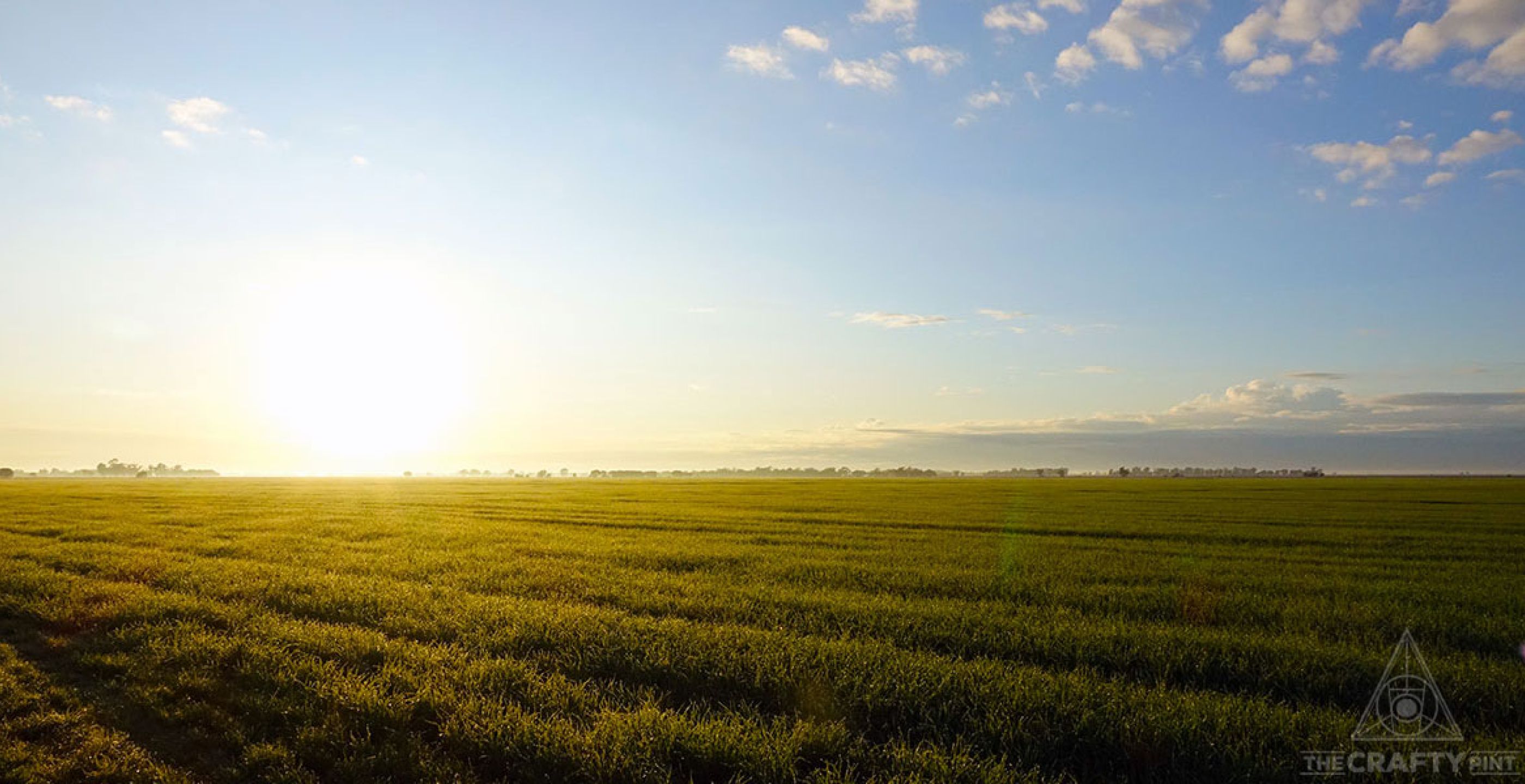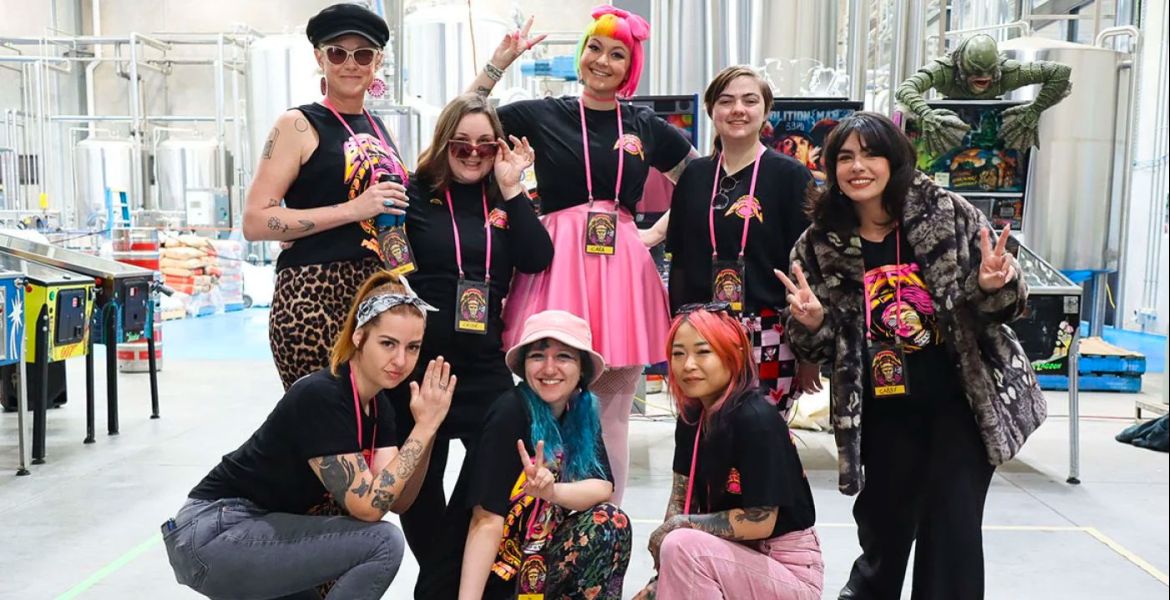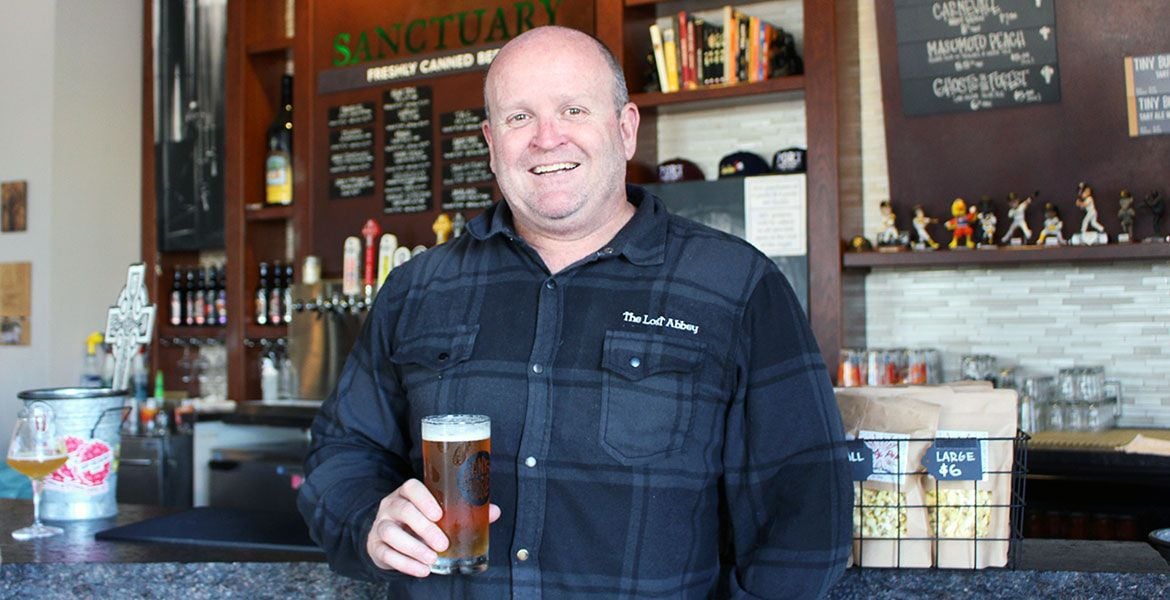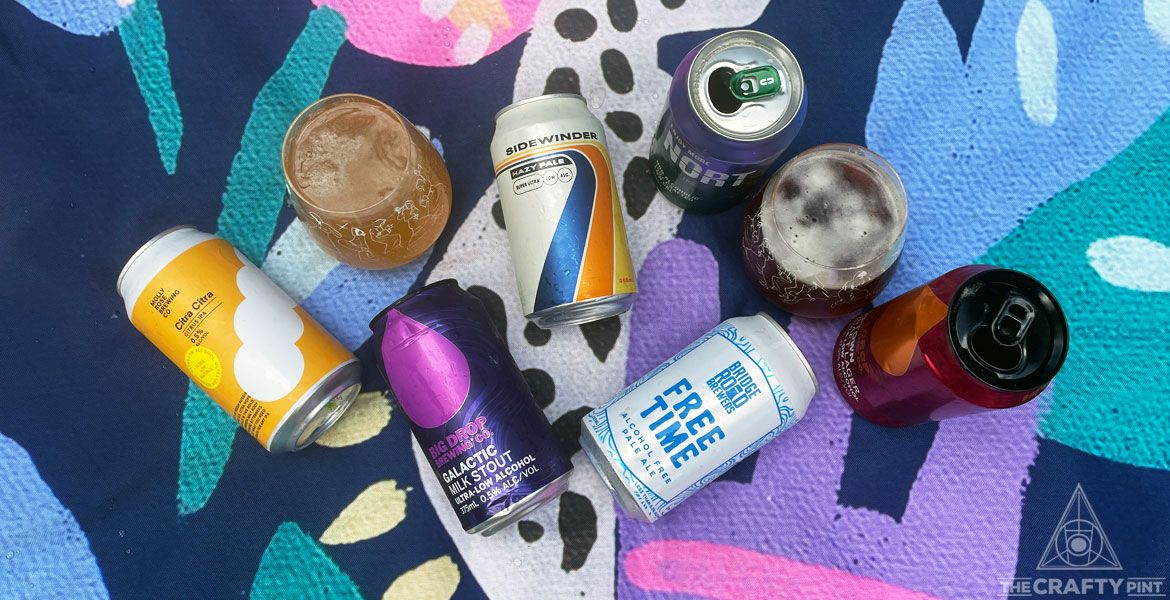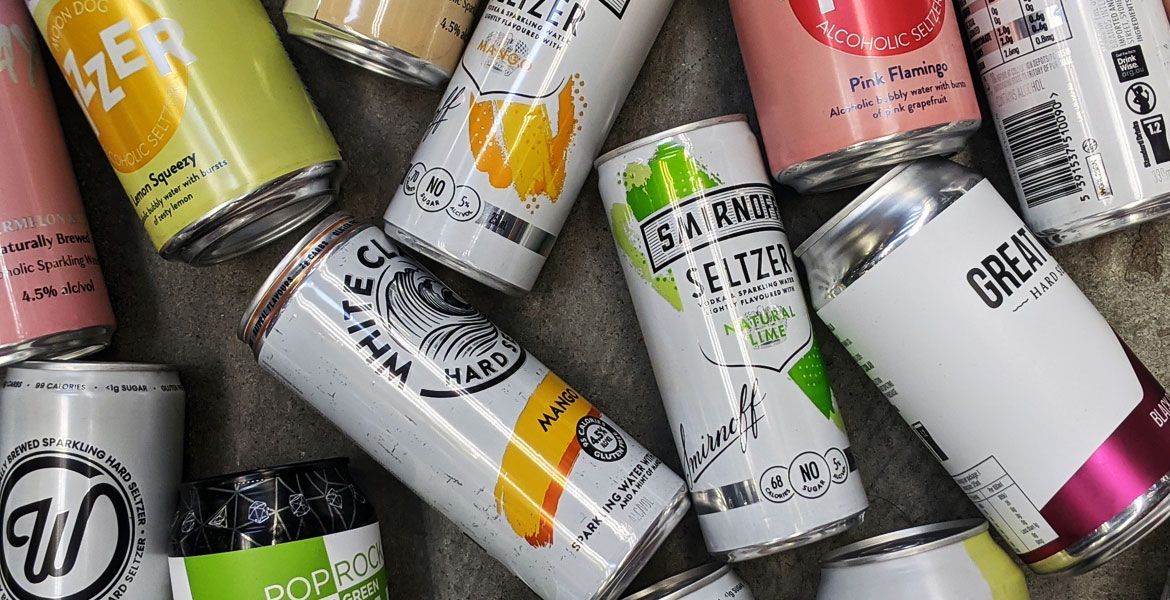The changing of the seasons is often a time for reflection, not least when it’s time to bid farewell to winter and say hello to spring. New life, rebirth, the prospect of warmer, brighter days ahead.
It’s not something we tend to do at The Crafty Pint – not in print, at least. But, given everything 2023 has thrown at the world so far, we had been discussing whether the time was ripe to attempt to encapsulate the myriad conversations about the current and future state of the local beer world we’ve had with people in all corners of the country.
And the events of the past week convinced us we should.
To summarise: since landing back in Melbourne from BrewCon last Thursday, on this site alone we’ve broken news of Moon Dog’s plans for Marvel Stadium and Fox Friday’s acquisition of Carwyn Cellars, while also covering the coming together of Otherside and Nowhereman.
Elsewhere, Lion and CUB have been making submissions to a parliamentary inquiry into competition, there have been more changes and strong words at the top of Mighty Craft, and a couple more small independent breweries have decided to call it quits.
If anyone was hoping the machinations of the local beer world would take a breather any time soon following 12 months of rising costs, stagnating sales, voluntary administrations and changes in ownership, they look set to be sorely disappointed.
And yet…
Maybe it’s the collective subconscious knowing winter is coming to an end. Maybe people have simply had enough of feeling down and overwhelmed after surviving three years of COVID-related challenges only to have far greater challenges dumped on them from all angles. Maybe business owners have found enough levers they could pull to ensure there’s a way for them to survive until those brighter days do return. Or maybe there really are some positive signs in the beer marketplace because, dare I say it, we’ve detected a mood of cautious – extremely cautious? – optimism in recent weeks.
Don’t get me wrong: amid the many cautiously optimistic conversations, there have been rather darker ones too. We’ve not seen the last of the closures, changes in ownership, administrations, or cries for help, and issues around tap contracts, private label beers and excise tax persist. Indeed, I’d be surprised if we don’t see more well-known craft brands announce they’re in major strife before the year is out.
And yet…

While there are issues within the craft beer world that are being, need to be, or have been addressed as a result of this downturn, I’d argue the economic downturn – the perfect storm we wrote about in February – is the biggest issue of all. Strip that away and there’s plenty to be positive about as the industry matures. You can make a strong argument that, while the confluence of headwinds for beer has been unnecessarily brutal, that brutality has helped accelerate changes that were overdue.
When going through the 3,000-plus articles we’d published since 2010 ahead of the launch of the new-look Crafty Pint a few weeks ago, I came across an article of predictions from January 1, 2017 (many of which remain relevant today), in which the first two points suggested there were too many new brewing companies coming online and not enough infrastructure in terms of indie-stocking venues and retailers to support them. Certainly, by the end of the last decade, there would have been as many, if not more, people predicting a rationalisation of the industry rather than the ongoing rampant growth that ensued.
Similarly, throughout 2019, a common conversation within the team at Crafty Towers was how the number and frequency (and, yes, sensibility) of limited and one-off releases was getting out of hand and risked overwhelming consumers. Sure, there were selfish reasons for this borne out of concern for our livers, but they were genuine concerns nonetheless.
Thus, when the national lockdown kicked in on March 23, 2020, there was a sort of relief – at least once we’d dealt with existential concerns for the future of the industry and dedicated ourselves to Keeping Local Alive. Whatever lay ahead, surely the number of limited releases would slow as breweries hunkered down and tried to survive.
But no. Instead, the pandemic proved something of a Band-Aid. A combination of factors such as JobKeeper, the ability to delay excise payments, and consumers realising they had money in their banks while they were stuck at home to drop on $18 pastry stouts and triple IPAs, meant there was a new, temporary safety net in place. Rather than experiencing a rationalisation, few businesses exited the market while more arrived, others invested heavily expecting continued growth, and the world of unlimited limiteds hit crazy new heights.
Thus, when the rationalisation did arrive, it did so with an even more swollen market to sink its teeth into, with more weapons at its disposal courtesy of external, often global, and in some cases unforeseeable, factors, and with businesses run and staffed by people already in various stages of exhaustion after navigating the pandemic. Little wonder we’ve seen such carnage.
And yet…
(It’s probably time for the cautious optimism part now, isn’t it?)

Amid the collapses, redundancies, cancelling of long-mooted projects, and tamped-down projections, necessity can be, as they say, the mother of invention. Businesses are being forced to be smarter and leaner, to refocus on what they are, what they stand for, who they want to be – in some cases realising they’d forgotten who they were while chasing all the new shiny things (demanded by a tiny percentage of noisy consumers).
The industry as a whole is asking important questions of itself that perhaps it always was asking, but doing so louder, and with more urgency to act. If you’d made your way around BrewCon on the Gold Coast last week, you could have caught panels and presentations on sustainability, innovation, embracing new audiences, trends, inclusivity, diversity and more. Craft beer has always tried to say it’s doing things better, and here were plenty of examples of this in action rather than the abstract.
Those that make it through these tough times should do so in a better position to make hay when the sun shines again. And, if you believe what the Independent Brewers Association’s keynote speaker, Bernard Salt, had to say, it’s set to shine more brightly in Australia than in most other developed economies – not least because there is so much growth across society as a whole to come in the next few decades.
Of course, when you have access to the sort of detail and insight he does, the phrase “lies, damn lies and statistics” comes to mind. Surely you can make any argument you like with a wealth of stats on hand, and you’re going to want to leave a roomful of brewers feeling good about themselves when you’re paid to open their first annual conference in four years, aren’t you? Yet it’s hard to argue with his message or the data upon which it was based.
The other keynote speaker was Bob Pease, from the US Brewers Association. As our senior writer, Will Ziebell, found when attending their Craft Brewers Conference in Nashville in May, there’s plenty of negative sentiment there too (albeit the word “optimism” can be found in the US BA’s mid-year report on the state of the American market). But, just as the wider population – and, thus, potential drinkers – is set to grow significantly in Australia over the coming years, so is there more room for growth here than across the Pacific simply because craft beer is yet to achieve anything like the penetration it already has in the States.
In one of the planning meetings ahead of the debate we hosted to close BrewCon – Has Craft Beer Jumped The Shark? – one of the panelists said something that really struck a chord. We’ve had plenty of discussions within the Crafty team this year about where the industry might find new drinkers who would fall for craft beer’s charms the way our generations had: how does the industry talk to Gen Z? What stories are people interested in given those of new brewery openings have been told hundreds of times? And so on.
As he pointed out, a few years ago he was working in the very epicentre of shark-jumping in beer; now, he’s at a regional brewery with a habit of winning trophies wherever they go and yet he reckons 90 percent of conversations he has with new-to-craft customers at their bar – customers, remember, who have chosen to go to a small brewery – are along the lines of: “Do you have anything like Great Northern?”
You could take that as a depressing state of affairs. Have we really failed to reach that many people despite the gains of the past decade and a half? Or you can look at it as a golden opportunity: there’s that many people out there who are yet to have their first non-mainstream beer? Let’s go!

Amid the hundreds of conversations about the present and future of beer that have taken place this year, one thought has kept rising: did we as an industry get complacent?
The early years of The Crafty Pint were not just a wild ride but also one with a singular mission: to prove to the world that craft beer was A Thing – not a fad that was going to fade. By 2013, I reckon that question had been answered, and the explosive growth that followed – admittedly with its own growing pains, closures, big beer buyouts and so on – merely cemented its status.
But did that cause people to believe the hard work was done – that success was guaranteed – while at the same time failing to take stock of what it might look like from the outside? Instead of reaching out beyond the beer bubble, had we merely made the bubble a bit bigger and, to those on the outside, more impenetrable?
I don’t pretend to have the answers, but asking such questions – arguably, being forced to ask them by the brutality of 2023 – feels like a good way to start getting back on track, or to forge a new, wiser, less wild but more sustainable track.
Perhaps we don’t need to think too hard or try to be too clever about finding new audiences for craft beer – we just need to get back to doing what we always did in terms of creating welcoming, exciting, fun and interesting places for people to visit, telling the stories of our businesses, our beers, our visions.
To get back to educating people about beer, brewing, its unrivalled heritage, and its connection to the land so they understand why we love it, why we believe ours is better than most beers on the market. How their purchasing choice can help support small businesses, who in turn are supporting other small businesses and their communities, or how buying a beer brewed with sustainable barley is better for the planet.
The Crafty Pint turns 13 this week and it goes without saying that this has been the toughest year so far, both mentally and financially (at least if you discount the early years trying to build this and Good Beer Week when I may have had to borrow money from mates to pay rent…). But, as with most of our peers in the industry, we’ve found a way to this point, I’m more hopeful of being around to mark anniversaries 14, 15 and beyond than I was a couple of months ago, and the need to think harder, deeper and more creatively in order to survive should – touch wood – leave us well placed as the economic situation brightens.
Because, while most of us running businesses in this industry won’t have run a business in a recession or economic downturn before, apparently they have happened in the past. So, while it’s easy to panic, such periods are temporary (just ignore the climate catastrophe unfolding for the purposes of this argument, OK?).
Strip away the pressures caused by inflation, interest rates, the cost-of-living crisis, the war in Ukraine and so on, and the craft beer world remains a pretty awesome place, populated by some pretty great people making the best beer they’ve ever made and selling it in some fantastic settings. Safety standards are better, education for budding brewers is more available than ever, there are genuine career paths within the industry that weren’t there a decade ago, The Crafty Pint’s jobs inbox has come alive again after a few fallow weeks, and those in the corridors of power are more aware that this world exists.
So, as the first days of spring approach, and I prepare to waken my family with the familiar blast of Noah and the Whale, I do believe there are reasons to be optimistic. Cautiously, of course.



